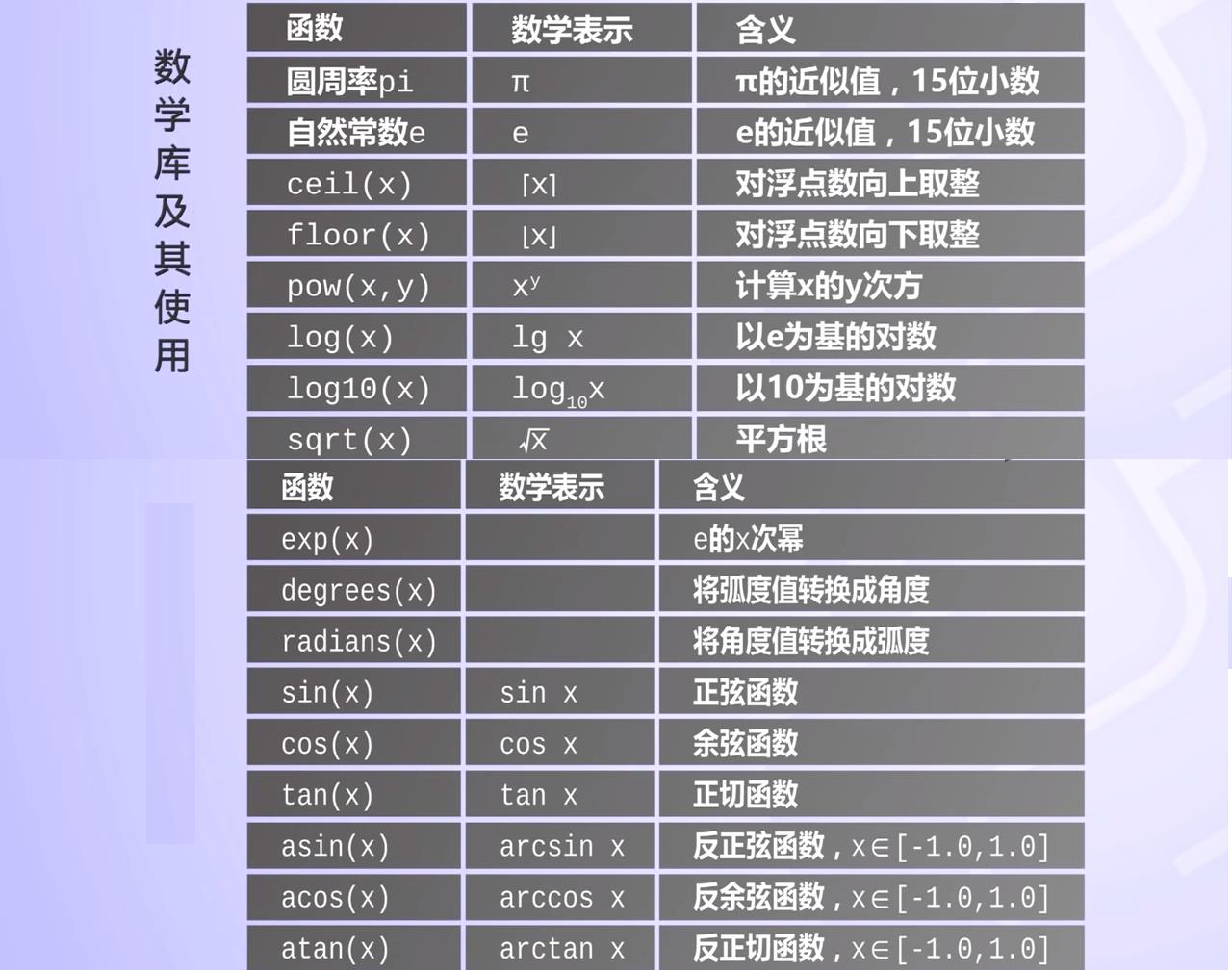python-examples
Posted pencil2001
tags:
篇首语:本文由小常识网(cha138.com)小编为大家整理,主要介绍了python-examples相关的知识,希望对你有一定的参考价值。

主要章节和小节重新按照如下逻辑划分:
-
一、Python基础
-
- 1 数字
- 2 字符串
- 3 列表
- 4 流程控制
- 5 编程风格
- 6 函数
- 7 输入和输出
- 8 数据结构
- 9 模块
- 10 错误和异常
- 11 类和对象
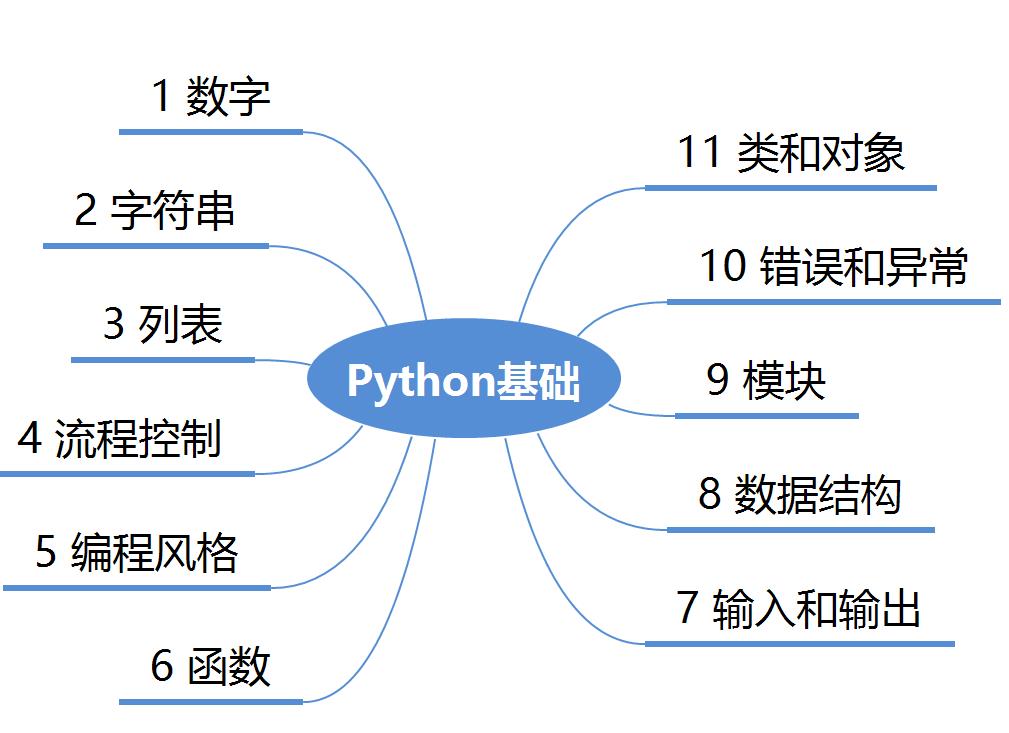
-
二、Python模块
-
- 1 时间模块
- 2 文件操作
- 3 常见迭代器
- 4 yield 用法
- 5 装饰器用法
- 6 枚举 用法
- 7 列表生成式
- 8 字典生成式
- 9 lambda 表达式
- 10 正则 常用

-
三、Python绘图
-
- matplotlib 常用
- seaborn 常用
- plotly 常用
- pyecharts 常用
- turtle 常用
- 三维绘图
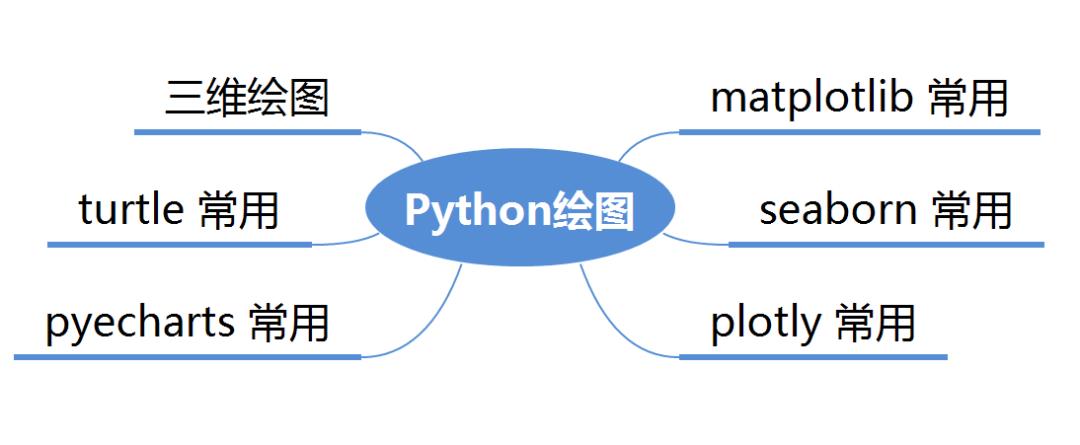
- 四、Python 数据分析
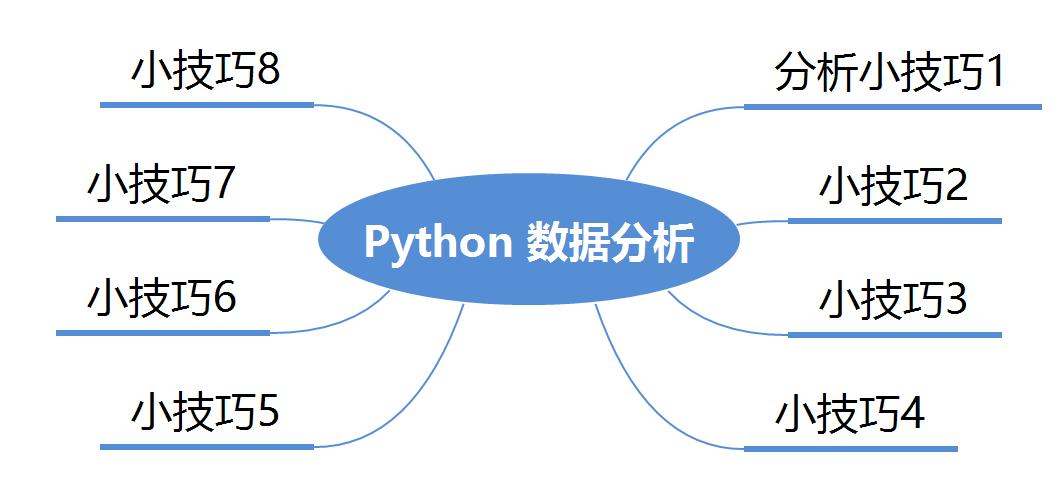
-
五、Python 基础算法
-
- 数组
- 链表
- 递归
- 排序和搜索
- 动态规划
- 图
- 树
- 字符串
- 其他
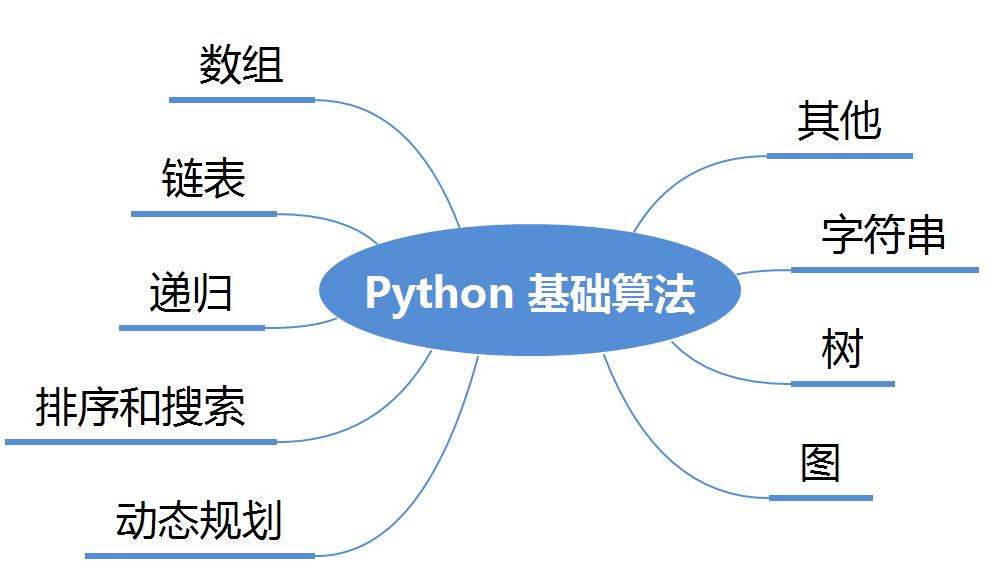
-
六、机器学习
-
- 机器学习本质
- boosting 系列
- 神经网络系列
- 强化学习系列
- 推荐系统
- CV 路线
- NLP 系列
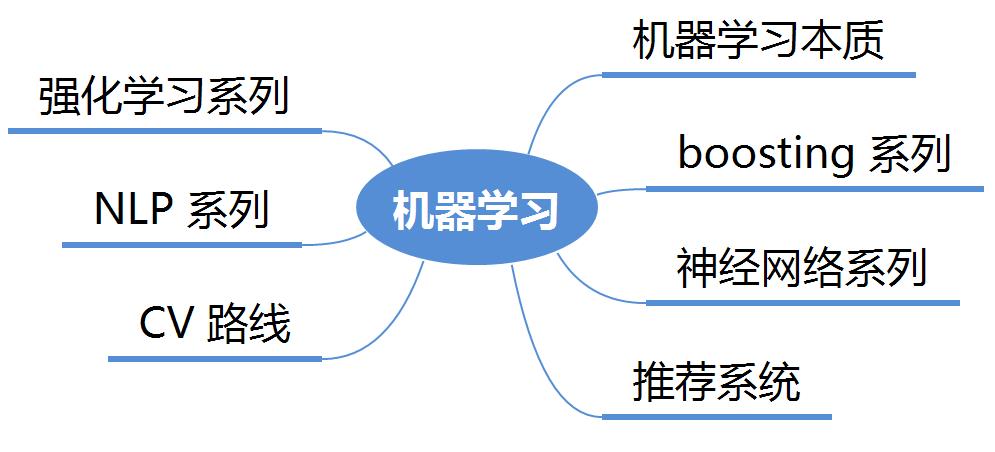
一、Python基础
Python基础主要总结Python常用内置函数;Python独有的语法特性、关键词nonlocal, global等;内置数据结构包括:列表(list), 字典(dict), 集合(set), 元组(tuple) 以及相关的高级模块collections中的Counter, namedtuple, defaultdict,heapq模块。目前共有90个小例子。
1 求绝对值
绝对值或复数的模
>>> abs(-6)
6
2 元素都为真
接受一个可迭代对象,如果可迭代对象的所有元素都为真,那么返回 True,否则返回False
有0,所以不是所有元素都为真
>>> all([1,0,3,6])
False
所有元素都为真
>>> all([1,2,3])
True
3 元素至少一个为真
接受一个可迭代对象,如果可迭代对象里至少有一个元素为真,那么返回True,否则返回False
没有一个元素为真
>>> any([0,0,0,[]])
False
至少一个元素为真:
>>> any([0,0,1])
True
4 ascii展示对象
调用对象的 __repr__ 方法,获得该方法的返回值,如下例子返回值为字符串
>>> class Student():
def __init__(self,id,name):
self.id = id
self.name = name
def __repr__(self):
return \'id = \'+self.id +\', name = \'+self.name
调用:
>>> xiaoming = Student(id=\'1\',name=\'xiaoming\')
>>> xiaoming
id = 1, name = xiaoming
>>> ascii(xiaoming)
\'id = 1, name = xiaoming\'
5 十转二
将十进制转换为二进制:
>>> bin(10)
\'0b1010\'
6 十转八
十进制转换为八进制:
>>> oct(9)
\'0o11\'
7 十转十六
十进制转换为十六进制:
>>> hex(15)
\'0xf\'
8 判断是真是假
测试一个对象是True, 还是False.
>>> bool([0,0,0])
True
>>> bool([])
False
>>> bool([1,0,1])
True
9 字符串转字节
字符串转换为字节类型
>>> s = "apple"
>>> bytes(s,encoding=\'utf-8\')
b\'apple\'
10 转为字符串
数值型等转换为字符串类型
>>> i = 100
>>> str(i)
\'100\'
11 是否可调用
判断对象是否可被调用
In [1]: callable(str)
Out[1]: True
In [2]: callable(int)
Out[2]: True
In [3]: xiaoming
Out[3]: id = 001, name = xiaoming
In [4]: callable(xiaoming)
Out[4]: False
如果想让xiaoming能被调用 xiaoming(), 需要重写Student类的__call__方法:
In [1]: class Student():
...: def __init__(self,id,name):
...: self.id = id
...: self.name = name
...: def __repr__(self):
...: return \'id = \'+self.id +\', name = \'+self.name
...: def __call__(self):
...: print(\'I can be called\')
...: print(f\'my name is {self.name}\')
...:
...:
In [2]: t = Student(\'001\',\'xiaoming\')
In [3]: t()
I can be called
my name is xiaoming
12 十转ASCII
查看十进制整数对应的ASCII字符
In [1]: chr(65)
Out[1]: \'A\'
13 ASCII转十
查看某个ASCII字符对应的十进制数
In [1]: ord(\'A\')
Out[1]: 65
14 类方法
classmethod 装饰器对应的函数不需要实例化,不需要 self 参数,但第一个参数需要是表示自身类的 cls 参数,可以来调用类的属性,类的方法,实例化对象等。
In [1]: class Student():
...: def __init__(self,id,name):
...: self.id = id
...: self.name = name
...: def __repr__(self):
...: return \'id = \'+self.id +\', name = \'+self.name
...: @classmethod
...: def f(cls):
...: print(cls)
15 执行字符串表示的代码
将字符串编译成python能识别或可执行的代码,也可以将文字读成字符串再编译。
In [1]: s = "print(\'helloworld\')"
In [2]: r = compile(s,"<string>", "exec")
In [3]: r
Out[3]: <code object <module> at 0x0000000005DE75D0, file "<string>", line 1>
In [4]: exec(r)
helloworld
16 创建复数
创建一个复数
In [1]: complex(1,2)
Out[1]: (1+2j)
17 动态删除属性
删除对象的属性
In [1]: delattr(xiaoming,\'id\')
In [2]: hasattr(xiaoming,\'id\')
Out[2]: False
18 转为字典
创建数据字典
In [1]: dict()
Out[1]: {}
In [2]: dict(a=\'a\',b=\'b\')
Out[2]: {\'a\': \'a\', \'b\': \'b\'}
In [3]: dict(zip([\'a\',\'b\'],[1,2]))
Out[3]: {\'a\': 1, \'b\': 2}
In [4]: dict([(\'a\',1),(\'b\',2)])
Out[4]: {\'a\': 1, \'b\': 2}
19 一键查看对象所有方法
不带参数时返回当前范围内的变量、方法和定义的类型列表;带参数时返回参数的属性,方法列表。
In [96]: dir(xiaoming)
Out[96]:
[\'__class__\',
\'__delattr__\',
\'__dict__\',
\'__dir__\',
\'__doc__\',
\'__eq__\',
\'__format__\',
\'__ge__\',
\'__getattribute__\',
\'__gt__\',
\'__hash__\',
\'__init__\',
\'__init_subclass__\',
\'__le__\',
\'__lt__\',
\'__module__\',
\'__ne__\',
\'__new__\',
\'__reduce__\',
\'__reduce_ex__\',
\'__repr__\',
\'__setattr__\',
\'__sizeof__\',
\'__str__\',
\'__subclasshook__\',
\'__weakref__\',
\'name\']
20 取商和余数
分别取商和余数
In [1]: divmod(10,3)
Out[1]: (3, 1)
21 枚举对象
返回一个可以枚举的对象,该对象的next()方法将返回一个元组。
In [1]: s = ["a","b","c"]
...: for i ,v in enumerate(s,1):
...: print(i,v)
...:
1 a
2 b
3 c
22 计算表达式
将字符串str 当成有效的表达式来求值并返回计算结果取出字符串中内容
In [1]: s = "1 + 3 +5"
...: eval(s)
...:
Out[1]: 9
23 查看变量所占字节数
In [1]: import sys
In [2]: a = {\'a\':1,\'b\':2.0}
In [3]: sys.getsizeof(a) # 占用240个字节
Out[3]: 240
24 过滤器
在函数中设定过滤条件,迭代元素,保留返回值为True的元素:
In [1]: fil = filter(lambda x: x>10,[1,11,2,45,7,6,13])
In [2]: list(fil)
Out[2]: [11, 45, 13]
25 转为浮点类型
将一个整数或数值型字符串转换为浮点数
In [1]: float(3)
Out[1]: 3.0
如果不能转化为浮点数,则会报ValueError:
In [2]: float(\'a\')
# ValueError: could not convert string to float: \'a\'
26 字符串格式化
格式化输出字符串,format(value, format_spec)实质上是调用了value的__format__(format_spec)方法。
In [104]: print("i am {0},age{1}".format("tom",18))
i am tom,age18
| 3.1415926 | {:.2f} | 3.14 | 保留小数点后两位 |
|---|---|---|---|
| 3.1415926 | {:+.2f} | +3.14 | 带符号保留小数点后两位 |
| -1 | {:+.2f} | -1.00 | 带符号保留小数点后两位 |
| 2.71828 | {:.0f} | 3 | 不带小数 |
| 5 | {:0>2d} | 05 | 数字补零 (填充左边, 宽度为2) |
| 5 | {:x<4d} | 5xxx | 数字补x (填充右边, 宽度为4) |
| 10 | {:x<4d} | 10xx | 数字补x (填充右边, 宽度为4) |
| 1000000 | {:,} | 1,000,000 | 以逗号分隔的数字格式 |
| 0.25 | {:.2%} | 25.00% | 百分比格式 |
| 1000000000 | {:.2e} | 1.00e+09 | 指数记法 |
| 18 | {:>10d} | \' 18\' | 右对齐 (默认, 宽度为10) |
| 18 | {:<10d} | \'18 \' | 左对齐 (宽度为10) |
| 18 | {:^10d} | \' 18 \' | 中间对齐 (宽度为10) |
27 冻结集合
创建一个不可修改的集合。
In [1]: frozenset([1,1,3,2,3])
Out[1]: frozenset({1, 2, 3})
因为不可修改,所以没有像set那样的add和pop方法
28 动态获取对象属性
获取对象的属性
In [1]: class Student():
...: def __init__(self,id,name):
...: self.id = id
...: self.name = name
...: def __repr__(self):
...: return \'id = \'+self.id +\', name = \'+self.name
In [2]: xiaoming = Student(id=\'001\',name=\'xiaoming\')
In [3]: getattr(xiaoming,\'name\') # 获取xiaoming这个实例的name属性值
Out[3]: \'xiaoming\'
29 对象是否有这个属性
In [1]: class Student():
...: def __init__(self,id,name):
...: self.id = id
...: self.name = name
...: def __repr__(self):
...: return \'id = \'+self.id +\', name = \'+self.name
In [2]: xiaoming = Student(id=\'001\',name=\'xiaoming\')
In [3]: hasattr(xiaoming,\'name\')
Out[3]: True
In [4]: hasattr(xiaoming,\'address\')
Out[4]: False
30 返回对象的哈希值
返回对象的哈希值,值得注意的是自定义的实例都是可哈希的,list, dict, set等可变对象都是不可哈希的(unhashable)
In [1]: hash(xiaoming)
Out[1]: 6139638
In [2]: hash([1,2,3])
# TypeError: unhashable type: \'list\'
31 一键帮助
返回对象的帮助文档
In [1]: help(xiaoming)
Help on Student in module __main__ object:
class Student(builtins.object)
| Methods defined here:
|
| __init__(self, id, name)
|
| __repr__(self)
|
| Data descriptors defined here:
|
| __dict__
| dictionary for instance variables (if defined)
|
| __weakref__
| list of weak references to the object (if defined)
32 对象门牌号
返回对象的内存地址
In [1]: id(xiaoming)
Out[1]: 98234208
33 获取用户输入
获取用户输入内容
In [1]: input()
aa
Out[1]: \'aa\'
34 转为整型
int(x, base =10) , x可能为字符串或数值,将x 转换为一个普通整数。如果参数是字符串,那么它可能包含符号和小数点。如果超出了普通整数的表示范围,一个长整数被返回。
In [1]: int(\'12\',16)
Out[1]: 18
35 isinstance
判断object是否为类classinfo的实例,是返回true
In [1]: class Student():
...: def __init__(self,id,name):
...: self.id = id
...: self.name = name
...: def __repr__(self):
...: return \'id = \'+self.id +\', name = \'+self.name
In [2]: xiaoming = Student(id=\'001\',name=\'xiaoming\')
In [3]: isinstance(xiaoming,Student)
Out[3]: True
36 父子关系鉴定
In [1]: class undergraduate(Student):
...: def studyClass(self):
...: pass
...: def attendActivity(self):
...: pass
In [2]: issubclass(undergraduate,Student)
Out[2]: True
In [3]: issubclass(object,Student)
Out[3]: False
In [4]: issubclass(Student,object)
Out[4]: True
如果class是classinfo元组中某个元素的子类,也会返回True
In [1]: issubclass(int,(int,float))
Out[1]: True
37 创建迭代器类型
使用iter(obj, sentinel), 返回一个可迭代对象, sentinel可省略(一旦迭代到此元素,立即终止)
In [1]: lst = [1,3,5]
In [2]: for i in iter(lst):
...: print(i)
...:
1
3
5
In [1]: class TestIter(object):
...: def __init__(self):
...: self.l=[1,3,2,3,4,5]
...: self.i=iter(self.l)
...: def __call__(self): #定义了__call__方法的类的实例是可调用的
...: item = next(self.i)
...: print ("__call__ is called,fowhich would return",item)
...: return item
...: def __iter__(self): #支持迭代协议(即定义有__iter__()函数)
...: print ("__iter__ is called!!")
...: return iter(self.l)
In [2]: t = TestIter()
In [3]: t() # 因为实现了__call__,所以t实例能被调用
__call__ is called,which would return 1
Out[3]: 1
In [4]: for e in TestIter(): # 因为实现了__iter__方法,所以t能被迭代
...: print(e)
...:
__iter__ is called!!
1
3
2
3
4
5
38 所有对象之根
object 是所有类的基类
In [1]: o = object()
In [2]: type(o)
Out[2]: object
39 打开文件
返回文件对象
In [1]: fo = open(\'D:/a.txt\',mode=\'r\', encoding=\'utf-8\')
In [2]: fo.read()
Out[2]: \'\\ufefflife is not so long,\\nI use Python to play.\'
mode取值表:
| 字符 | 意义 |
|---|---|
\'r\' |
读取(默认) |
\'w\' |
写入,并先截断文件 |
\'x\' |
排它性创建,如果文件已存在则失败 |
\'a\' |
写入,如果文件存在则在末尾追加 |
\'b\' |
二进制模式 |
\'t\' |
文本模式(默认) |
\'+\' |
打开用于更新(读取与写入) |
40 次幂
base为底的exp次幂,如果mod给出,取余
In [1]: pow(3, 2, 4)
Out[1]: 1
41 打印
In [5]: lst = [1,3,5]
In [6]: print(lst)
[1, 3, 5]
In [7]: print(f\'lst: {lst}\')
lst: [1, 3, 5]
In [8]: print(\'lst:{}\'.format(lst))
lst:[1, 3, 5]
In [9]: print(\'lst:\',lst)
lst: [1, 3, 5]
42 创建属性的两种方式
返回 property 属性,典型的用法:
class C:
def __init__(self):
self._x = None
def getx(self):
return self._x
def setx(self, value):
self._x = value
def delx(self):
del self._x
# 使用property类创建 property 属性
x = property(getx, setx, delx, "I\'m the \'x\' property.")
使用python装饰器,实现与上完全一样的效果代码:
class C:
def __init__(self):
self._x = None
@property
def x(self):
return self._x
@x.setter
def x(self, value):
self._x = value
@x.deleter
def x(self):
del self._x
43 创建range序列
- range(stop)
- range(start, stop[,step])
生成一个不可变序列:
In [1]: range(11)
Out[1]: range(0, 11)
In [2]: range(0,11,1)
Out[2]: range(0, 11)
44 反向迭代器
In [1]: rev = reversed([1,4,2,3,1])
In [2]: for i in rev:
...: print(i)
...:
1
3
2
4
1
45 四舍五入
四舍五入,ndigits代表小数点后保留几位:
In [11]: round(10.0222222, 3)
Out[11]: 10.022
In [12]: round(10.05,1)
Out[12]: 10.1
46 转为集合类型
返回一个set对象,集合内不允许有重复元素:
In [159]: a = [1,4,2,3,1]
In [160]: set(a)
Out[160]: {1, 2, 3, 4}
47 转为切片对象
class slice(start, stop[, step])
返回一个表示由 range(start, stop, step) 所指定索引集的 slice对象,它让代码可读性、可维护性变好。
In [1]: a = [1,4,2,3,1]
In [2]: my_slice_meaning = slice(0,5,2)
In [3]: a[my_slice_meaning]
Out[3]: [1, 2, 1]
48 拿来就用的排序函数
排序:
In [1]: a = [1,4,2,3,1]
In [2]: sorted(a,reverse=True)
Out[2]: [4, 3, 2, 1, 1]
In [3]: a = [{\'name\':\'xiaoming\',\'age\':18,\'gender\':\'male\'},{\'name\':\'
...: xiaohong\',\'age\':20,\'gender\':\'female\'}]
In [4]: sorted(a,key=lambda x: x[\'age\'],reverse=False)
Out[4]:
[{\'name\': \'xiaoming\', \'age\': 18, \'gender\': \'male\'},
{\'name\': \'xiaohong\', \'age\': 20, \'gender\': \'female\'}]
####49 求和函数
求和:
In [181]: a = [1,4,2,3,1]
In [182]: sum(a)
Out[182]: 11
In [185]: sum(a,10) #求和的初始值为10
Out[185]: 21



